Transferts monétaires et mobilité humaine
Les transferts monétaires sont souvent utilisés lors de crises afin de répondre aux besoins des personnes migrantes. Dans cette page, vous trouverez des ressources sur les transferts monétaires et la migration.

La Croix-Rouge se prépare à fournir une aide humanitaire aux migrant·es de la caravane sur le point de quitter le Honduras pour le Guatemala.
©Johannes Chinchilla / FICR.
Conflits, crises économiques et catastrophes sont autant de raisons ayant contraint des personnes à fuir et à traverser des frontières dans des conditions éprouvantes et risquées, en quête de sécurité et de moyens de subsistance. En 2020, le nombre de personnes déplacées de force s’est envolé au niveau sans précédent de plus de 80 millions de personnes, soit près du double du nombre enregistré il y a une dizaine d’année. Cette tendance s’aggrave et les effets du changement climatique menacent de déplacer jusqu’à 200 millions de personnes d’ici 2050.
L’assistance monétaire est de plus en plus utilisée afin de répondre aux besoins des personnes en situation de déplacement. On y a eu recours à grande échelle dans différents contextes de migration, en Europe en 2015 jusqu’au Venezuela pour « los caminantes ». Elle a également été utilisée dans d’autres crises migratoires, notamment en Amérique centrale, au Sahel, en Méditerranée et dans la Corne de l’Afrique. L’assistance monétaire est à l’heure actuelle l’une des principales formes d’aide apportée aux populations déplacées en Ukraine et dans les pays voisins.
Il existe une myriade de perspectives et de définitions concernant le mot « migrant·e » et la façon dont les humanitaires doivent agir. C’est pourquoi nous ne choisissons pas une définition unique pour le moment, étant donné que les discussions sur l’assistance monétaire et la migration en sont encore à leurs prémices et que le langage évolue encore.
Documenter et partager les données probantes donnera lieu à des interventions plus efficaces. Cette page contient une sélection de ressources utiles concernant la migration et le recours à l’assistance monétaire. Elle sera mise à jour au fil des discussions ayant lieu dans les espaces humanitaires des transferts monétaires.
Priorités actuelles
Afin de contribuer aux progrès relatifs à cet enjeu, nous nous engageons à :
- soutenir la création de données probantes aux niveaux régional et mondial ;
- contribuer aux solutions pratiques visant à mettre en œuvre les transferts monétaires auprès des personnes migrantes ;
- organiser des discussions sur les enjeux majeurs basées sur des données probantes.
Contenu récent
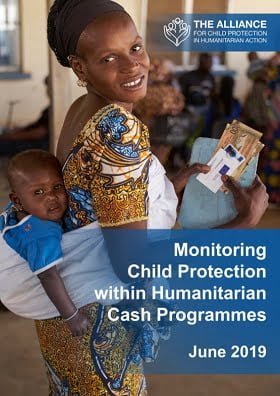
Monitoring Child Protection within Humanitarian Cash Programmes
Guidelines and Tools
This paper summarises findings from an initial scoping study, which seeks to review how child protection outcomes are captured when monitoring multi-purpose humanitarian cash programmes. The study intends to inform the development and piloting of new approaches to integrating child protection concerns...

Cash Assistance and the Prevention, Mitigation and Response to Sexual and Gender-Based Violence
Report
The study Cash Assistance and the Prevention, Mitigation and Response to Sexual and Gender-Based Violence (SGBV) is based on comprehensive research in Lebanon, Ecuador and Morocco. It provides learning and recommendations when using cash assistance in the prevention, mitigation and response to SGBV. The...
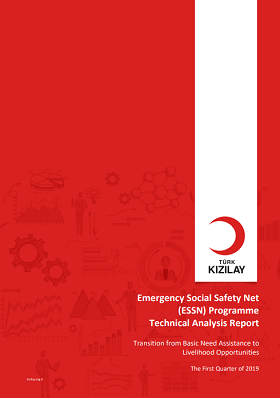
Emergency Social Safety Net (ESSN) Programme Technical Analysis Report
Report
The Emergency Social Safety Net Programme (ESSN) was launched as
a result of partnership between the European Union and Turkey on
20 October 2016 as a pilot study. The programme which provides
cash assistance through Kızılaykart to 1.5 million foreigners that meet
the criterion was extended nationwide...
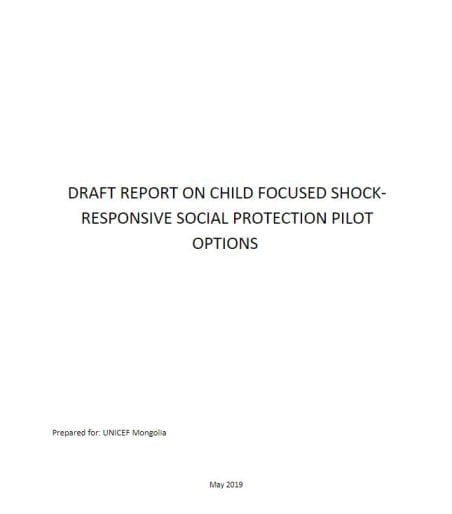
Draft Report On Child Focused Shock-responsive Social Protection Pilot Options
Report
UNICEF seeks to work together with other development partners to support the Government of Mongolia (GoM) to pilot a shock-responsive social protection (SRSP) program in order to demonstrate the value of mainstreaming SRSP into the national social protection system and to generate lessons on whether and...
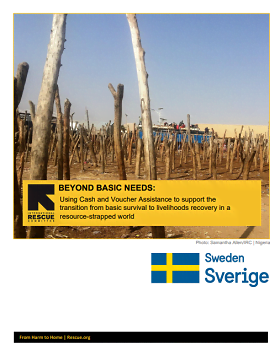
Beyond Basic Needs: Using Cash and Voucher Assistance to Support the Transition from Basic Survival to Livelihoods Recovery in a Resource-Strapped World
Guidelines and Tools
Do you think of yourself as a “cash” person OR as a “livelihoods” person? An “emergency” practitioner OR a “recovery” practitioner? Or do you find yourself unsatisfied with the often narrow implications of these terms? We’ll never have enough funding to provide basic needs support to...

Indicateurs de résultats des transferts monétaires à usages multiples : Projet final à tester
Guides et outils
Les indicateurs présentés dans ce document se concentrent sur les principaux objectifs des TMUM humanitaires et sur les résultats auxquels les transferts monétaires à usages multiples peuvent le plus fortement contribuer. (Par exemple, certaines interventions en TMUM visent à relier les personnes...

Quantitative assessment of the social assistance system of the Kingdom of Eswatini
Report
Analysis of social assistance needs, coverage of needs by existing programs and identification of social assistance gaps in Eswatini
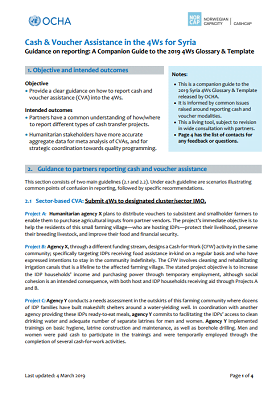
Cash & Voucher Assistance in the 4Ws for Syria Guidance on reporting: A Companion Guide to the 2019 4Ws Glossary & Template
Guidelines and Tools
Objective
• Provide a clear guidance on how to report cash and voucher assistance (CVA) into the 4Ws.
Intended outcomes
• Partners have a common understanding of how/where to report different types of cash transfer projects.
• Humanitarian stakeholders have more accurate aggregate data for meta...
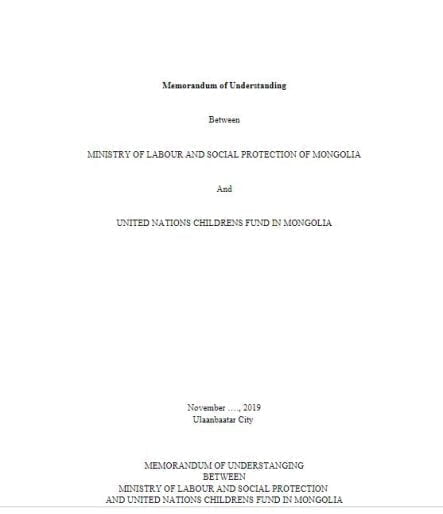
Memorandum of Understanding Between Ministry Of Labour And Social Protection Of Mongolia And Unicef
Guidelines and Tools
This Memorandum of Understanding (MoU) sets forth the terms and understanding between the MLSP and UNICEF Mongolia to collaborate to implement a Child-focused Shock-Responsive Social Protection (SRSP) Pilot (the Climate Emergencies Child Grant), which will be separate from but based on the implementation...

Cash transfer Programmes – Impact on Stunting and Financial Inclusion
Report
This report focussed on evidence published in the last ten years (since 2009) on cash transfer programs’ impact on stunting and financial inclusion. The importance of maternal education on stunting emerged from the literature and warrants further investigation, which was outside the scope of this...

CVA for Protection: A Mapping of IRC’s Use of Cash and Voucher Assistance to Help Achieve Protection Outcomes
Guidelines and Tools
The IRC first began to integrate cash into protection programs in 2013, leveraging the flexibility of CVA to support clients living in urban refugee contexts in the Middle East. Since then, IRC has rapidly expanded its use of CVA to help achieve protection outcomes. This scale-up has come with important...

Impact Assessment for Cash for Education Project funded by DGECHO in Egypt
Report
The overall objectives of the Impact assessment were: To measure the impact of cash on the girls and boys by DGECHO funded project. To measure the impact of cash on Education and protection through a gender lens to investigate considerations of power dynamics in the households Understand the good...

Consultation on Cash and Voucher Assistance to the Main Spanish NGOs Funded by Aecid – Executive Summary
Report
This executive report summarizes the results obtained from a study of the cash and voucher assistance (CVA) practices of eight Spanish NGOs in the field of humanitarian assistance. You can read the full report in Spanish here.
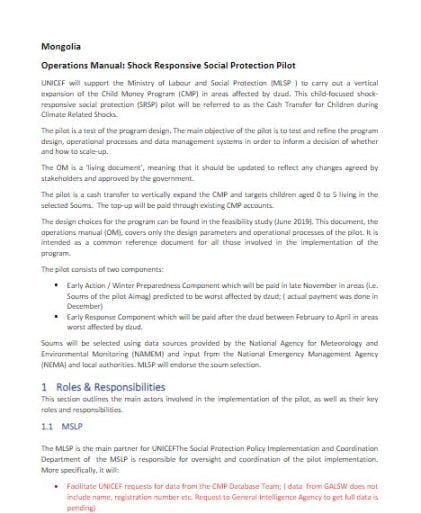
Operations Manual: Shock Responsive Social Protection Pilot
Guidelines and Tools
The pilot is a test of the program design. The main objective of the pilot is to test and refine the program design, operational processes and data management systems in order to inform a decision of whether and how to scale-up.
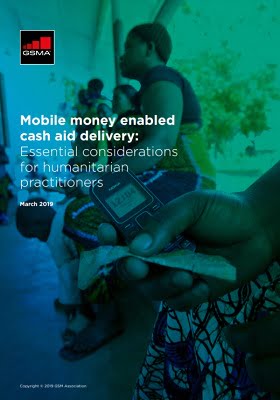
Mobile money enabled cash aid delivery: Essential considerations for humanitarian practitioners
Guidelines and Tools
This report offers guidance for humanitarian practitioners considering mobile money enabled cash and voucher assistance (CVA) programmes. It provides a foundational understanding of the design of mobile money systems for CVA, the benefits they offer relative to other common CVA delivery mechanisms, and...

Harmonising registrations and identification in emergencies in Somalia
Report
The study reveals that the collection of registration and identification data in Somalia is governed mainly by policies, guidelines and standard operating procedures developed by humanitarian agencies. Before collecting registration data, most humanitarian agencies select recipients through a two-step...

The Gendered Dimension of Multi-Purpose Cash Supporting Disaster Resilience
Report
In 2017, in response to the mounting humanitarian crisis in Yemen, CARE Yemen and Action Contra la Faim (ACF) implemented a cash transfer program and community asset rehabilitation and skill building programing in the governorates of Abyan and Amran. This European Union (EU)-funded program integrated...
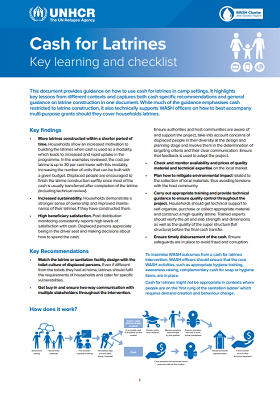
Cash for Latrines
Guidelines and Tools
This document provides guidance on how to use cash for latrines in camp settings. It highlights key lessons from different contexts and captures both cash specific recommendations and general guidance on latrine construction in one document.
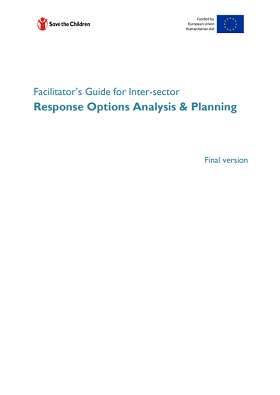
Response Options Analysis Planning Guide
Guidelines and Tools
The inter-sector Response Options Analysis and Planning (ROAP) is a structured decision-making process, which draws from the information generated through a multitude of needs and operational environment assessments. The ROAP gives way to the selection of the most appropriate, operationally feasible and...
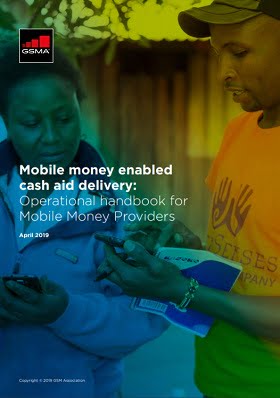
Mobile money enabled cash aid delivery: Operational handbook for Mobile Money Providers
Guidelines and Tools
Section 1 of this handbook provides essential background on the humanitarian sector and cash and voucher assistance (CVA) programmes. A brief overview of the business case for CVA delivery identifies the potential revenue streams that can come from building long-term strategic partnerships with...